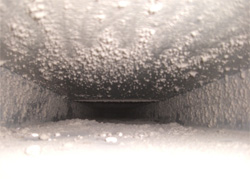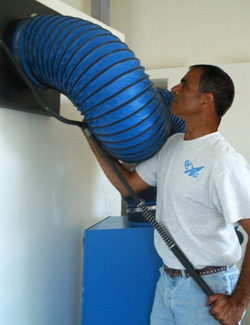 |
| |
Amasht Hygiene E-news | January 2011 |
|
| |
How to Specify Air Duct Cleaning Work to Ensure the Right Outcome |
|
| |
|
For most facility managers, setting up robust and appropriate tender specification for a specialist service such as air duct cleaning or maintenance of a ventilation hygiene system from scratch would be a considerable challenge.
Fortunately, the Building Services Research and Information Association (BSRIA) has written a Standard Specification of Ventilation Hygiene, which is intended to provide the basis for a ventilation hygiene contract between a Client and a Contractor. This document walks the facility manager through the various areas that need to be considered in specifying how the work is to be undertaken, and provides an excellent starting point to producing a tender document or contract of work. |
|
 |
| |
 |
|
The BSRIA specification covers the following sections: |
|
Scope: Sets out such details as definition of terms and the requirement to adhere to appropriate standards.
Management of ventilation hygiene: For ensuring clarity between the client and contractor as to what modifications may be needed to the air ducts in order to undertake the cleaning work, and also to explicitly make it a contractor responsibility to make good and clear up afterwards.
Inspection, sampling and testing: Covers any samples to be taken from the inside of the ventilation system, and guidelines for biological testing.
Level of cleanliness: Here the client would define the level of cleanliness required, how it is to be measured as well as any requirement for disinfection.
Cleaning methods: Here the client states the need for the contractor to provide a method statement, and justification for any variations envisaged to their standard method.
The section also lays out some standard best-practice requirements.
High risk extraction systems: To detail the cleaning approach and precautions necessary for dealing with any known hazardous substances or materials used within the ventilation process.
Disinfection: Best practice requirements such as ensuring manufacturers guidelines are followed, COSHH information is made available, and that there is no adverse impact to the occupants of a building. |
| |
|
|
Elimination of odours: Need to conduct a proper inspection for sources of odour.
Cleaning after fire and smoke damage: Purely for the eventuality that there is smoke or fire damage to the ventilation duct system.
Hazardous materials: Process to be followed if unexpected hazardous materials were to be found within the internal air ducts.
Waste disposal: Ensures that the Contractor declares that they are licenced to remove waste, and has an audit process in place to monitor this activity.
Fault reporting: Procedure in the event a fault with the system being identified.
Post-cleaning report: Specifies not only that a certificate of cleaning is required at the end of the job, but also what interim reporting is required, e.g. after particular stages.
System balance and rebalancing after cleaning: Here the client can make it a clear responsibility of the service provider to reset any system controls (e.g. volume control dampers) to the original settings. |
| |
| The BSRIA Standard Specification of Ventilation Hygiene is a very useful framework for facility managers to create tender documents for ventilation cleaning in a tried and tested format. |
| Article Source: http://EzineArticles.com/?expert=Iain_Jones |
 |
 |
|
Our eyes can distinguish up to one million colour surfaces and take in more information than the largest telescope known to man.
There are more living organisms on the skin of a single human being than there are human beings on the surface of the earth.
The human hand contains three main nerves, two major arteries and 27 different bones - more of the body is devoted to controlling the hands than any other part of the body.
When we go to sleep and enter REM (Rapid Eye Movement), our bodies become completely paralysed as areas of the brain that control movement are de-activated. It is this that stops us from falling out of bed. |
|
|
|
| |
| |
|
|
|
|
 |
If you dont want to receive this newsletter, please click on ‘unsubscribe'
Amasht Paper Hygiene Products Pvt. Ltd., S.No.23, Thergaon, Pune 411033. email: amasht@vsnl.com www.amasht.com
Please click here if you cant view the newsletter properly. |
|
|